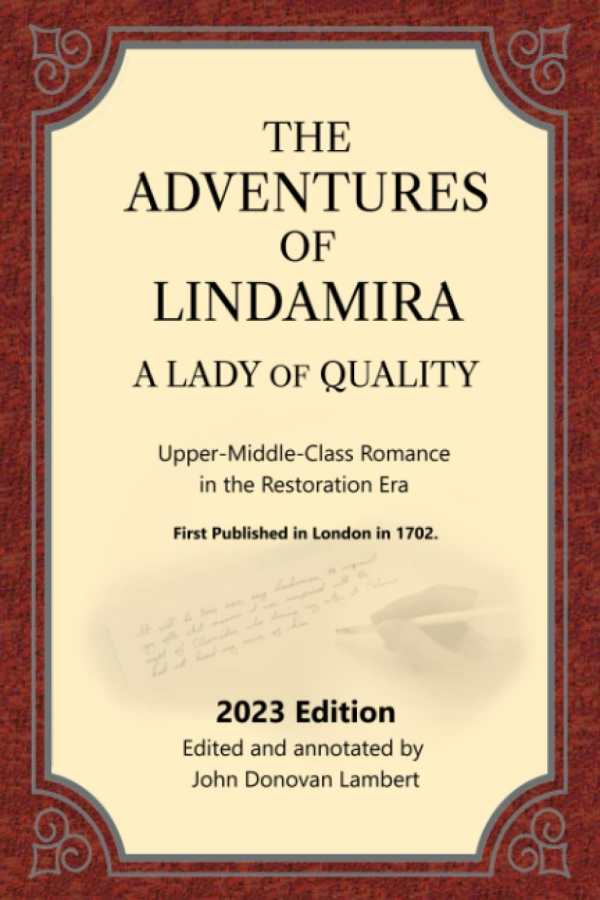It looks like you've stumbled upon a page meant to be read by our code instead of viewed directly. You're probably looking for this page.
The Adventures of Lindamira
A Lady of Quality: Upper-Middle-Class Romance in the Restoration Era: First Published in London in 1702
The revived eighteenth-century precursor to classic English society novels, The Adventures of Lindamira is a witty romance that charts a coy heroine’s courtships.
First published in the 1700s and revived by John Donovan Lambert for a new edition, the curious romance novel The Adventures of Lindamira covers a woman’s suitors across twenty-five letters.
Notes on Lambert’s predecessors—Benjamin Boyce, editor of the 1949 edition, and Thomas Brown, editor of the 1702 edition—generate intrigue about this literary artifact, whose significance is covered in the book’s introduction and end notes. An eighteenth-century bestseller, it was penned by an unknown author. Some consider it to be the first romance novel written in English. Lambert posits that it inspired one of the earliest works of fan fiction, the short story “Indamora to Lindamira,” by Lady Mary Wortley Montagu. It was set among middle-class people at a time when such focus was uncommon.
Lindamira, a Londoner, makes an epistolary confession to her friend, Indamora. Her letters have a heightened tone; she is an indignant, vivacious, and sometimes petty narrator who embellishes the story of her romantic life, beginning in her sixteenth year, with “nothing remarkable happening.” Her virtue is trusted by her mother; she has the freedom to spend time with her friends. And she recalls being watched by a “spark” at church whom she dubs “Philander.” Here and elsewhere, humor arises because of the gulf between what is stated and how events are otherwise perceived.
Philander’s pursuit of Lindamira is followed letter by letter. She considers his actions bold. She also doles out details with an eye toward audience entertainment, reshaping her experiences to suit her narration: Philander is a “shallow noodle”; another suitor, Sir Formal Trifle, is a “Fustian” windbag. And a succession of others are just as inadequate to Lindamira, including a married man and a poetry-loving chaplain. Questions are raised regarding when, or how, Lindamira will change her mind about anyone.
The epistolary format is sometimes limiting—including because Indamora’s replies aren’t included. Thus, Lindamira’s shortsightedness and gossip form the novel’s amusing center. She faults others for their swift determinations and emotional behaviors, but she is seldom introspective about how she is also subject to her early impressions of people.
A few experimental devices—including a story within a story—deepen the book and expand its themes of trouble in love. And the novel reveals plenty about people’s expectations and behavior. As unsuitable men are dispatched with and driven to dramatic lengths despite their flattery, Lindamira’s verbal dexterity wins out.
A mannered parlor exercise then and a lacerating, plain-funny story now, The Adventures of Lindamira is the revived precursor of classic English society novels—a witty romance that charts a coy heroine’s courtships.
Reviewed by
Karen Rigby
Disclosure: This article is not an endorsement, but a review. The publisher of this book provided free copies of the book and paid a small fee to have their book reviewed by a professional reviewer. Foreword Reviews and Clarion Reviews make no guarantee that the publisher will receive a positive review. Foreword Magazine, Inc. is disclosing this in accordance with the Federal Trade Commission’s 16 CFR, Part 255.
